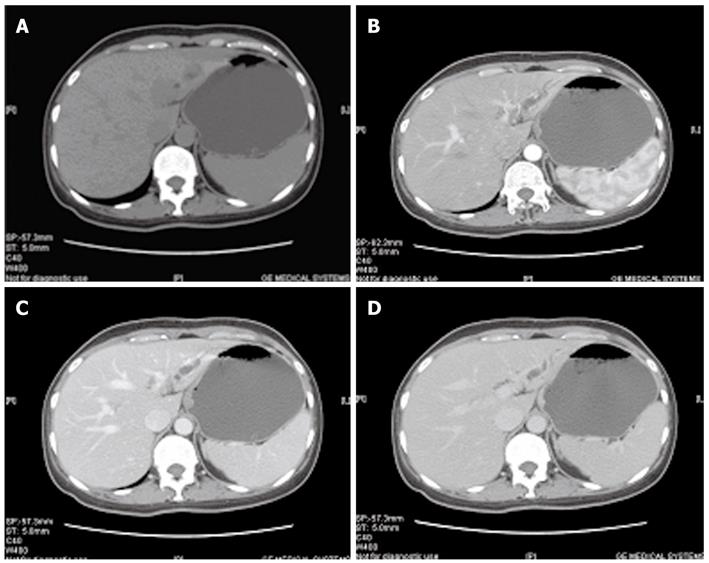Copyright
©2012 Baishideng Publishing Group Co.
World J Gastroenterol. Jun 14, 2012; 18(22): 2881-2884
Published online Jun 14, 2012. doi: 10.3748/wjg.v18.i22.2881
Published online Jun 14, 2012. doi: 10.3748/wjg.v18.i22.2881
Figure 1 Computed tomography scan shows the dilatation of the bile ducts of left hepatic lobe and a mass located in the bile duct of left hepatic lobe.
A-D: Computed tomography scan of abdomen showing dilatation of the bile ducts of left hepatic lobe and a mass located in the bile duct of left hepatic lobe near the hepatic hilus.
Figure 2 Histopathology shows the heterotopic pancreas and ductal adenocarcinoma arising from heterotopic pancreas.
A: Histopathology showing the pancreatic tissue consisting of acinar cells and ductal elements [hematoxylin and eosin (HE), × 4]; B: Histopathology showing the acinar cells containing eosinophilic granules (HE, × 10); C: The solid area showing ductal adenocarcinoma arising from heterotopic pancreas with nerve infiltration (HE, × 4); D: The solid area showing ductal adenocarcinoma arising from heterotopic pancreas with nerve infiltration (HE, × 20).
- Citation: Yan ML, Wang YD, Tian YF, Lin Y. Adenocarcinoma arising from intrahepatic heterotopic pancreas: A case report and literature review. World J Gastroenterol 2012; 18(22): 2881-2884
- URL: https://www.wjgnet.com/1007-9327/full/v18/i22/2881.htm
- DOI: https://dx.doi.org/10.3748/wjg.v18.i22.2881










